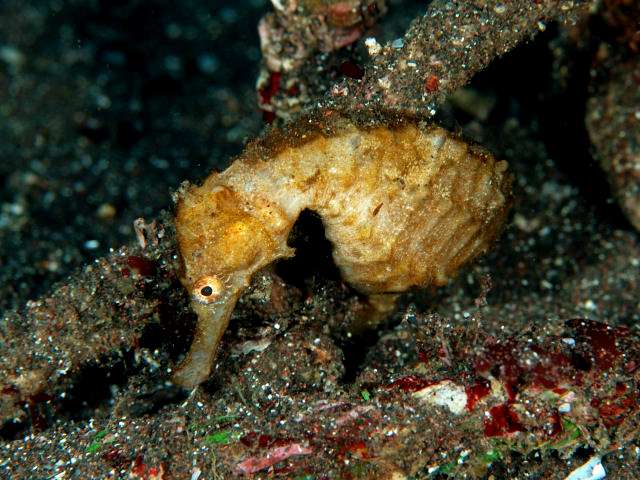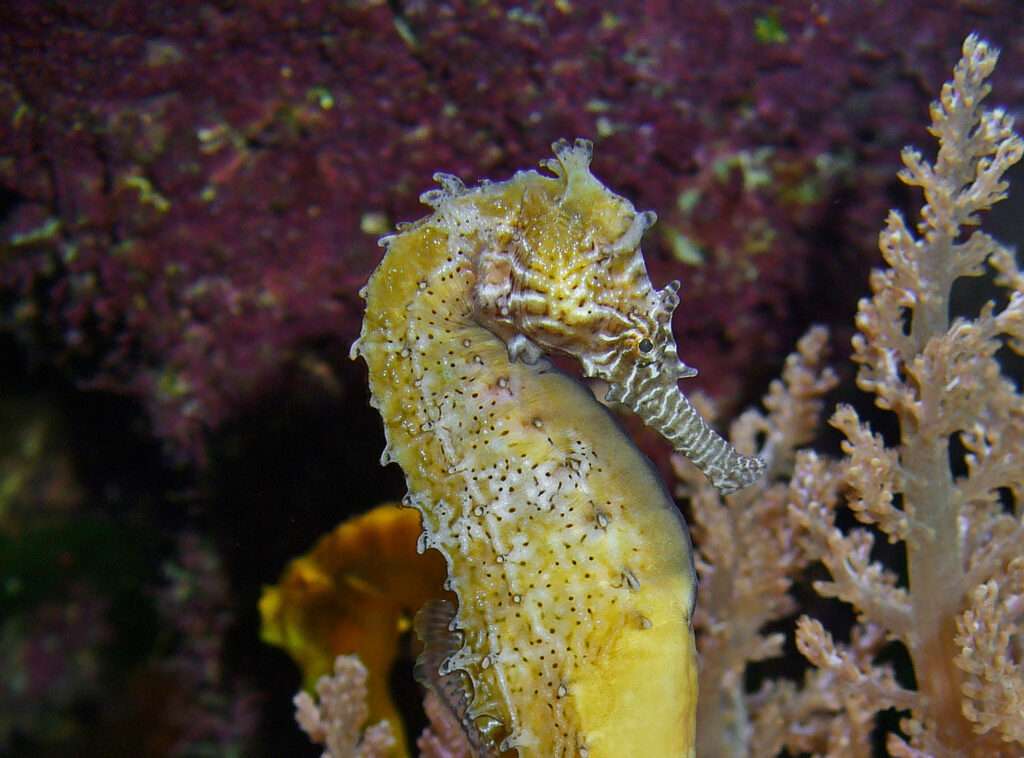
Fish belonging to the family Syngnathidae include the flat-faced seahorse, longnose seahorse, low-crowned seahorse, and three-spot seahorse (Hippocampus trimaculatus). It can be found in Australia, the Cocos (Keeling) Islands, French Polynesia, the Philippines, Singapore, Taiwan, Thailand, and Vietnam, as well as Indonesia, Hong Kong, the Philippines and India. Shallow oceans are where it naturally lives. Loss of habitat is a hazard to it.
Description
As a means of energy conservation, seahorses frequently anchor to sea grass while grazing. It can look many different ways, but it typically has a flat body, a small head, sharp, hook-like cheek and eye spines, and no nose spines. Its color could be anything from sand-colored to nearly black, or even bright orange. Some have brown and white stripes that mimic zebra stripes. Males are also often considered to be a little bit longer than girls.
Food
Plankton and tiny crustaceans are the main components of its food and are ingested through its nose.

Location and susceptibility
The typical depth range for these seahorses is 10 to 100 meters. However, young flat-nosed seahorses have recently been spotted at a depth of less than 0.1 meters; these may be the first juvenile seahorses to ever be seen drifting in the Malacca Strait. This may be compelling evidence for this species’ passive long-distance migration.
These seahorses can be found in murky estuaries, areas with gravel or sand next to coral reefs, and areas next to mangrove forests. They are able to endure in brackish water. Although habitat loss affects the flat-faced seahorse, it is only classed as vulnerable and not endangered. It is exposed as a result of a few things. The annual international trade in millions of flat-faced seahorses and the frequent bycatch of these creatures both have a key role in this. Seahorses are frequently fished out and utilized in traditional Chinese medicine. They are also frequently dried and sold as trinkets in the United States. The Convention on International Trade in Endangered Species of Wild Fauna and Flora, or CITES, has recommended limiting the seahorse trade as a result of these activities. Although these limitations are not mandatory, traders who want to be recognized as sustainable must abide by them. The main restriction is that seahorses smaller than 10 cm cannot be harvested.
Breeding
Due to the way seahorses mature sexually, the size restriction is essential. Before they get to that size, these seahorses become sexually mature. The eggs of flat-faced seahorses are given to the males during mating, after which the females carry the eggs and give birth to live young. The gestation period lasts an average of 16 days and can last anywhere between 11 and 20 days; the variation in length appears to be driven by water temperature. At 22.5 °C, 24 °C, and 28.5 °C, the species’ gestation periods were 19 days, 16 days, and 11 days, respectively. Comparable to other Hippocampus species, these times. Although they can mate all year in captivity, the breeding season for flat-faced seahorses in the China Sea is from March to May. Their optimal breeding season may vary from place to place because they are dependent on the consistency of water temperature to reproduce.
Biology
From the intertidal to around 20 meters of depth, adults live in shallow algae or weedy reef habitats. The maximum length is measured in a straight line from the upper surface of the first trunk ring to the tip of the tail. Ovoviviparous. The male carries the eggs in a pouch under his tail called a brood pouch.
Table





